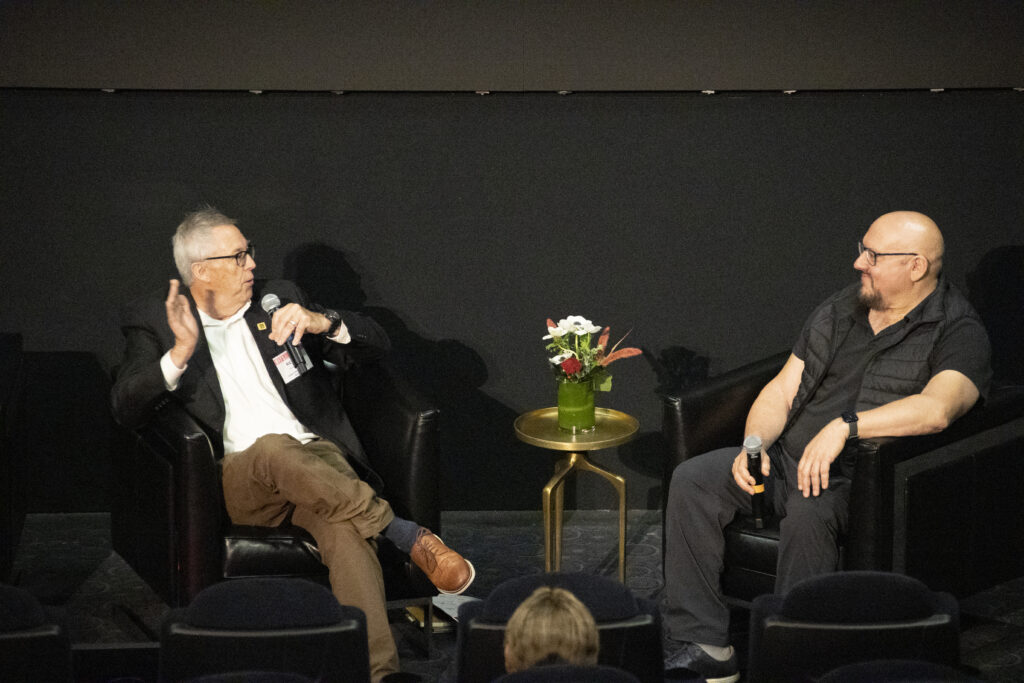
HITS 2023: CDSA, Fortinet Explore the Opportunities, Risks Presented by Web 3.0
Web 3.0 has the ability to change entertainment types and experiences, enable completely new customer experiences and relationships, and even enable products to be sold while also allowing their creators to be securely compensated each and every time a transaction is made, according to Aamir Lakhani, senior FortiGuard staff SE at Fortinet, and other industry experts who spoke May 23 at the Hollywood Innovation and Transformation Summit (HITS) at The Culver Theater.
Business and technology Innovators are already starting to explore the opportunities that Web 3.0 brings but this all comes with new risks also, they said during the panel session “Opportunity & Risk: Exploring the Two Sides of Web 3.0.”
Those risks include the growth of deep fakes and other content that can masquerade as an original, more advanced form of fraud against an organization’s intellectual property, and adaptable targeted attacks that are potentially tougher to detect and harder to stop.
“It’s a classic repeat pattern,” said moderator Richard Atkinson, president of the Content Delivery & Security Association (CDSA). “Even though everybody’s kind of saying ‘Web 3, it’s never going to happen’ or ‘Do we really need the metaverse?’ I think people see in some ways these kind of wrong impressions about what things are. For example, the metaverse. If you think that’s Web 3.0, it might be a flavor of a very narrow element of it, but it really isn’t what Web 3.0 is probably going to become at all.”
 Agreeing, Seth Shapiro, founder and managing partner at Digital Asset Advisors and chairman for the National Association of Broadcasters (NAB) Web3 Advisory Council, compared the situation to another key part of the online experience. “The first websites, they were horrible, right? They were horrible consumer experiences. They crashed. Originally there weren’t even URLs, right? You had to enter in IP address. So maybe we’re there. And the metaverse projects to date are pretty bad. But that doesn’t mean that there aren’t going to be immersive worlds of some sort where people go that are high fidelity. [But] they’re probably more akin to gaming environments than they are to a lot of the stuff that we’ve seen to date.”
Agreeing, Seth Shapiro, founder and managing partner at Digital Asset Advisors and chairman for the National Association of Broadcasters (NAB) Web3 Advisory Council, compared the situation to another key part of the online experience. “The first websites, they were horrible, right? They were horrible consumer experiences. They crashed. Originally there weren’t even URLs, right? You had to enter in IP address. So maybe we’re there. And the metaverse projects to date are pretty bad. But that doesn’t mean that there aren’t going to be immersive worlds of some sort where people go that are high fidelity. [But] they’re probably more akin to gaming environments than they are to a lot of the stuff that we’ve seen to date.”
Lakhani pointed out that “one of the things about Web 3.0 – and what we were talking about earlier about direct consumer markets – is that’s one of the powers of what Web 3.0 and people are just trying to understand: that ‘my intellectual property doesn’t have to stop the first time that I sell it. I can kind of make continuous revenue off this.’”
But then come more questions, he noted: “How are you going to make that continuous revenue? Well, that’s a little bit where the innovations [come] in. But I would definitely echo the comments that were made earlier” at the event: “It gives us more opportunity to get more streams of revenue in a more continuous manner.”
Moving on, Atkinson said: “One of the things we’re recognizing is that … in the days of the big six, they were able to control supply. And, through supply, they could also control distribution. And, [with] primetime TV, you watched your show Wednesday at eight and that was it until the next Wednesday at eight. And, if you missed it, [you] missed it, and all those kind of things. And so what we saw with YouTube and a lot of the other stuff was a pure democratization.”
He added: “You may have to work through certain tools to get there but it really becomes democratized. And so the opportunity for the big guys is [they] need to get on top of this and you need to get moving and get your feet wet because this stuff is coming…. That it is unlocking the doors on the ability to not just publish but all these new monetization models and how you control it.”
Moving on to what Atkinson called the “scary stuff,” he pointed to risks that include those created by artificial intelligence. “We certainly know AI is unlocking tons of black hat kind of stuff under every rock…. Some of these topics, I think, the three of us could probably talk about for about a month straight and not even hit the surface.”
But he said: “The important part to remember is anytime there’s new technology, not only are people trying to figure out how to make it work but they’re also trying to figure out how to exploit that. The bad guys are essentially thinking, ‘Hey, how can I get into this early enough where I can get in, get out, exploit that, and maybe make some money, maybe do some type of cyberattacks against that.’ And that’s what we’re looking at.” Then there are also blockchain-related issues, he noted.
Concluding, Atkinson said: “We’re still at the early stages, tip of the iceberg. We’re in the trough. But we’ll probably pick this conversation up” at the CDSA Content Protection Summit in December.
The Hollywood Innovation and Transformation Summit event was produced by MESA in association with the Hollywood IT Society (HITS) and presented by Amazon Studios Technology, with sponsorship by Fortinet, Genpact, Prime Focus Technologies, Signiant, Softtek, Convergent, Gracenote, Altman Solon, AppTek, Ascendion, CoreSite, EPAM, MicroStrategy, Veritone, CDSA, EIDR and PDG Consulting.
